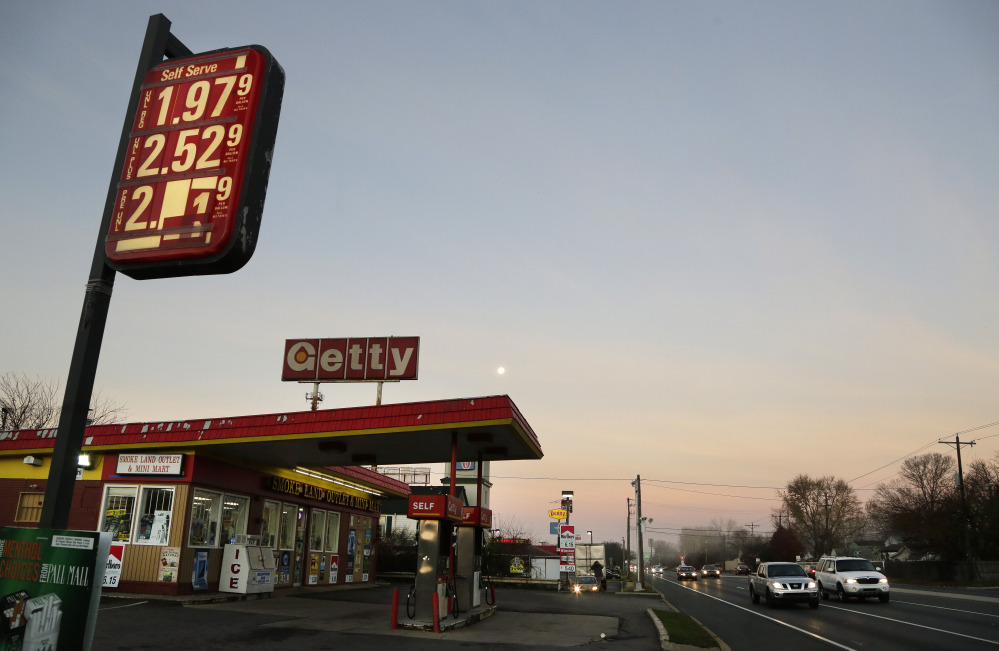DALLAS — All day long, vehicles flow into Fuel City gas station on the outskirts of downtown Dallas. They’re headed to Austin or Abilene or Shreveport or maybe just down the road, just as they did 16 months ago when gasoline was selling for $3.50 a gallon.
Except now, there are more of them. When owner John Benda reviews his sales, he can see the evidence.
“People are taking road trips again. The trucking companies have been doing more deliveries, and they’re not complaining about the price of diesel anymore,” he said. “I would say (gasoline sales are) up 7 percent, 8 percent, which is a lot for me.”
The dramatic decline in gasoline prices over the past year has come as a relief to motorists, for whom the prospect of $2-a-gallon gasoline once seemed the stuff of nostalgia. Now drivers can fill up for less than it costs to take their children to the movies. And as the principles of economics dictate, they’re filling up more often.
For the first time since 2010, U.S. gasoline consumption was higher this summer than it was the year before. Americans on average pumped more than 370 million gallons of gasoline a day between June and August, a 5 percent increase over 2014 and the largest 12-month increase since the U.S. Energy Information Administration started recording that data in 1983.
The recent spike reverses a years-long slide in U.S. gasoline consumption, driven in large part by high prices and new federal standards that required better fuel efficiency on new vehicles. According to the EIA, America’s thirst for gasoline peaked in the summer of 2005 at 395 million gallons a day on average. Ever since, it’s been on a fairly steady downward slide.
Until now. As the lows in gasoline prices continue, Americans – initially hesitant to respond to the price drop – have been consuming more and more fuel. Two key pieces of data bear this out:
First, Americans are simply driving more than they have in recent years. As of July 31, Americans had driven 1.8 trillion miles in 2015 – 4 percent more than they did last year, according to estimates by the U.S. Department of Transportation.
Second, we’re buying bigger and less-efficient cars. U.S. pickup and SUV sales are growing by double digits. Last month, researchers at the University of Michigan reported that the fuel efficiency of new vehicles pulling off the lot had fallen 2 percent since August 2014.
That ended what had been a fairly steady upward trajectory — from late 2007 to last August the average new American vehicle went from 20.1 mpg to 25.8 mpg.
“There’s a level of price where people start changing habits,” said Will Speer, an analyst in Houston with the research firm GasBuddy. “Before gas prices became so affordable, you never would have considered the SUV because it was guzzling so much gas. Now if you look up how many Google searches of car efficiency, that has actually gone down with lowering of gasoline prices.”
The spike in fuel consumption worries environmentalists, who say that if sustained it could intensify changes already underway in the earth’s climate.
According to the Environmental Protection Agency, U.S. carbon emissions had fallen steadily since 2007, driven in some measure by the reduction in the amount of gasoline the United States was burning. That mirrored similar trends in Europe and other developed countries.
“There was an awareness (poor) economic conditions played a role, but there was also an understanding it had to do with efficiency,” said Lorne Stockman, research director of the environmental group Oil Change International. “If we’re going to tackle climate change, any increase in fossil fuel use is the wrong direction. No matter the size.”
For those on the road, the last 10 months harken back to better economic times, when filling up hardly gave motorists a second thought. Gasoline prices in Texas have stayed below $2.50 a gallon on average for all but a couple months this summer, when crude prices briefly rebounded.
For Paul Strom, a software engineer, that has meant more trips to see his daughter attending college in Austin. Amy Franklin, a stay-at-home mom who describes herself as a penny pincher, is so enjoying the bargains at the pump that she tweeted last month, “CHEAP. GAS. YES.”
Right now, U.S. gasoline prices are averaging less than $2.01 a gallon, according to GasBuddy. In Texas, the average is only $1.84 a gallon. Analysts are predicting prices will continue to fall through early 2016, bottoming out around February.
Ben Tison, vice president of fuel operations for 7-Eleven, said that once oil prices rebounded he expected gasoline to level out around $2.50 a gallon.
“I don’t think we’ll go back to $4.50 gas,” he said. “The customer kind of expects $2 gas now.”
Send questions/comments to the editors.



Success. Please wait for the page to reload. If the page does not reload within 5 seconds, please refresh the page.
Enter your email and password to access comments.
Hi, to comment on stories you must . This profile is in addition to your subscription and website login.
Already have a commenting profile? .
Invalid username/password.
Please check your email to confirm and complete your registration.
Only subscribers are eligible to post comments. Please subscribe or login first for digital access. Here’s why.
Use the form below to reset your password. When you've submitted your account email, we will send an email with a reset code.